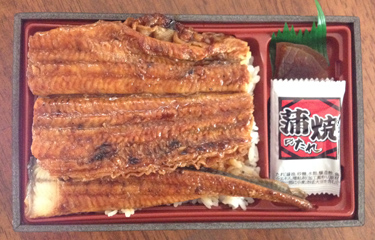The number of eels caught in Japan rose sharply in the most recent fishing season, covering the period from November 2019 to the end of April 2020, according to a Fisheries Agency report.
Glass eels, or elvers, are juvenile eels that are caught and raised to full size in grow-out ponds located in 19 prefectures across Japan. The top prefectures in terms of stocking amount of elvers are Kagoshima, Aichi, Miyazaki, and Shizuoka.
A new report from Japan’s Fisheries Agency titled, “The Situation and Measures Regarding Eels,” reveals that even though Japan’s domestic catch has improved after years of declines, the market for eel has fallen drastically as Japan’s restaurants have been forced to curtail service as a result of the coronavirus outbreak.
Domestic catches of Japanese eel juveniles fluctuate year by year, and imports cover the difference between supply and aquaculture demand. By the end of March 2020, 16.9 metric tons (MT) of domestically caught elvers had been stocked to Japanese aquaculture ponds, along with 3 MT of imported elvers. This compares with a year-over-year comparison of only 2.5 MT domestic eels and 11.2 MT of imported stocked through March 2019, meaning the domestic total increased by 6.7 times.
As the season runs through April, the final figures for both years will be higher. In 2019, the final total was 3.7 MT domestic and 11.5 MT imported. This was the lowest domestic harvest on record, below the previous low of 5.2 MT in the 2013 season. As recently as 2006, the domestic catch alone was 27.5 MT. In 1962, about 230 MT were taken, but this rate of exploitation – along with deleterious alterations to rivers and estuaries – soon led to sharp declines in glass eel returns.
The government has imposed a combined pond stocking upper limit for Japanese eel of 21.7 MT since 2015. This was the result of an agreement that also set limits for China (36 MT), South Korea (11.1 MT), and Taiwan (10 MT), based on a 20 percent reduction from 2012 levels. Other species of eel have a separate limit of 3.5 MT for Japan, 32 MT for China, 13.1 for South Korea, and 10 MT for Taiwan. In Japan, “other species” usually refers to imports of American elvers.
Prices of elvers of the species Anguilla japonica have fluctuated along with supply. They reached a peak in 2018, at JPY 3 million (USD 28,000, EUR 26,100) per kilogram. Last year, the average price was JPY 2.2 million (USD 20,600, EUR 19,000) per kilogram.
Such high levels have tempted poachers. The Fisheries Agency reports that in the five years up to 2016, there were 278 cases of poaching recorded, and that since then, there have been 40 to 60 cases per year. Fines were increased in 2011. Previously, the fine was JPY 100,000 (USD 941, EUR 871), allowing large profits even if caught. Now the fine can go as high as JPY 30 million (USD 282,000, EUR 261,000).
Prices for the American eel, Anguilla rostrata, are lower than those of eels of Japanese origin. Most eels from the U.S., caught almost entirely in the U.S. state of Maine, go to China, where they are grown out for the Japanese market. This year, the combination of lower demand due to COVID-19 and higher catches in Asia has Maine prices down from a high of more than JPY 552,800 (USD 5,200, EUR 4,800) per kilogram in 2018 to about JPY 117,000 (USD 1,100, EUR 1,000) this year. These figures are converted from USD 500 (EUR 461) per pound reported by the Associated Press. The Bangor Daily News put the average price this season slightly higher, at an average of USD 512 (EUR 472) per pound. These are prices paid by brokers to the fishers, not the delivered price of the elvers in China.
Maine-based elver dealer Mitchell Feigenbaum said the season has been a tough one, beginning with a delay in the season’s opening and continuing with much lower prices than typical.
“A lot of our buyers and end users are going through what we’re going through. Uncertainty. Logistical risks and nightmares,” he told the Japan Times.
Japanese and American eels are shown on the International Union for Conservation of Nature (IUCN) red list as endangered, while the European eel, Anguilla anguilla, is listed as critically endangered and their export of the outside of the E.U. is currently banned. However, a University of Hong Kong study based on DNA testing found that almost half of retail eel products sold in Hong Kong were derived from European eel. The study was published in Science Advances on 4 March. A similar 2018 Greenpeace DNA sampling of eel sold at Japanese supermarkets found no European eel, though it did find one case of American eel labeled as Japanese eel.
While Japan has made efforts to remove barriers to eel migration and to provide cover along straightened and cemented “channelized” rivers, part of the annual variations in elver returns, as well as their timing, may be due changes in ocean currents. A 2018 study, “Potential impact of ocean circulation on the declining Japanese eel catches,” which tracked the movement of virtual larvae in different historical ocean conditions, posited that declines in numbers of elvers returning to Japan in certain years (as well as the broader long-term decline) may be partly due to ocean currents carrying larvae southward toward the Philippines rather northward toward Japan.
“In recent years, instead of entering the Kuroshio [Current] and moving towards East Asia as in the 1990s’, more v-larvae tended to enter the southern areas due to the weakening of the NEC [North Equatorial Current] and strengthening of subsurface southward flow near the spawning area,” the paper said.
Photo courtesy of Chris Loew/SeafoodSource







